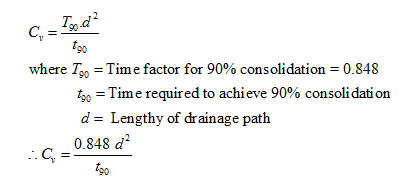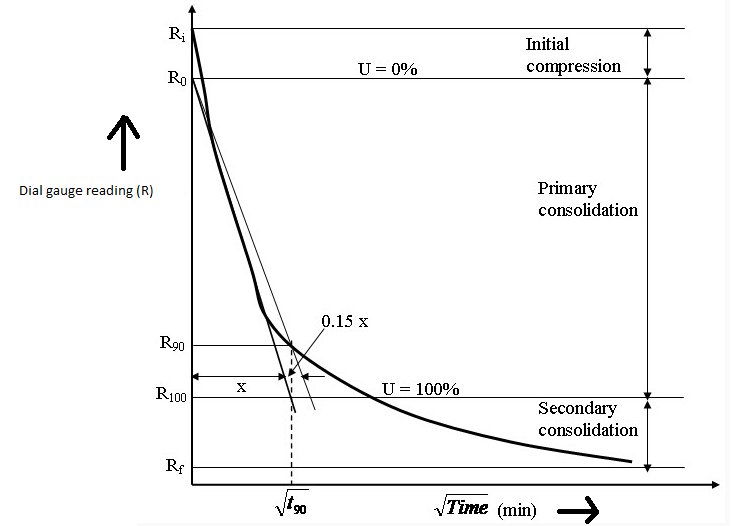Explain the Two procedures are in common use to determine values for the coefficient of consolidation?
Explain the Two procedures are in common use to determine values for the coefficient of consolidation?
Coefficient of Consolidation  , is a soil parameter governing the time-rate of consolidation.
, is a soil parameter governing the time-rate of consolidation.  is not a constant parameter which is a function of stress increment. It also depends on the type of soil and its value decreases with increase in liquid limit.
is not a constant parameter which is a function of stress increment. It also depends on the type of soil and its value decreases with increase in liquid limit.
Usually, the coefficient of consolidation is determined empirically on the basis of comparison between the time-compression curve with the theoretical curve. These procedures are known as time-fitting methods.
This procedure is given by Taylor. It utilizes the theoretical relationship between U and  . The sample of soil whose coefficient of consolidation is required is tested. For a given load increment, the dial gauge readings are noted for different time intervals. A curve is plotted between the dial gauge reading (R), as ordinate, and the
. The sample of soil whose coefficient of consolidation is required is tested. For a given load increment, the dial gauge readings are noted for different time intervals. A curve is plotted between the dial gauge reading (R), as ordinate, and the  as abscissa. The curve begins at the dial gauge reading
as abscissa. The curve begins at the dial gauge reading  at time =
at time =  .
.
The graph is a straight line up to U is less than or equal to 60%. It has been further established that at U =90%, the value of  is 1.15 times the value obtained by the extension of the initial line portion.
is 1.15 times the value obtained by the extension of the initial line portion.
As per this method, the  is obtained from t Taylor's square root of time fitting graphe relation:
is obtained from t Taylor's square root of time fitting graphe relation:

The Taylor's square root fitting graph is shown as:

Step by step
Solved in 3 steps with 14 images









